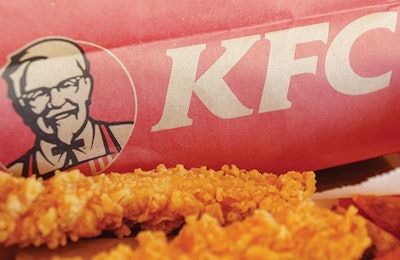
Plant-based protein at your favorite chicken restaurant? It could happen before we know it.
Without question, plant-based proteins are having quite the moment. Consumers – motivated by the desire to eat healthier, reduce their environmental impact or simply cut back on meat consumption – are showing increased interest in alternative proteins such as the plant-based products made by companies like Impossible Foods Inc. and Beyond Meat Inc.
In late May 2019, CNBC reported YUM! Brands Inc. – the operator of KFC, Pizza Hut and Taco Bell – is looking into adding plant-based protein options to its menu. It’s not the only major quick-serve restaurant chain investigating the option, either. McDonald’s Corp. and Chick-fil-A are also reportedly considering adding alternative proteins to their menu. They would be following in the footsteps of Burger King Corp., which is rolling out the so-called Impossible Whopper across the country in summer 2019.
The customer is always right?
I’m a strong believer that businesses that serve the needs of their consumers are more likely to succeed in the long term. That’s basic commerce. If consumers are showing interest in cutting back the amount of meat in their diet, then the quick serve restaurants where, according to U.S. Centers for Disease Control (CDC), a third of Americans are eating every day are going to have to adjust to stay relevant.
First, consumers are likely going to be paying more for this product. In Miami, another locale where the Impossible Whopper debuted in May, curious parties paid an average of a dollar more per burger for the novel sandwich than the standard beef version.
Second, hungry, health-conscious customers may think they are choosing something healthier when they purchase an alternative protein. However, they are likely purchasing a high fat, highly processed item that doesn’t exactly mesh with the so-called clean eating ethos. Healthline reported the Impossible Whopper is not necessarily healthier than a regular one, with a similar amount of calories, fat and protein. The impossible version does feature less cholesterol, but trades that for more sodium.
How about chicken? Beyond Meat’s chicken strip product, compared with a market leader’s similar product, includes more calories, more fat and more carbohydrates. They do carry less sodium and cholesterol, however. (Beyond Meat is no longer listing its chicken product on its website.)
Third, what does this say about the identity of a chicken-focused restaurant like KFC or Chick-fil-A when they place an imitation product on the menu alongside the product they built their brand around? I suppose the near future will show us if it makes a difference to the average hungry person looking for a quick meal.
What is meat then?
I’ve been avoiding writing about this because there are few things more pedantic and tiresome than arguing about what words mean. Despite that, those in animal agriculture and the poultry industry are in a battle about what exactly meat is and what super market shoppers and corporate protein buyers consider to be meat.
To those in animal agriculture, meat is the flesh of an animal. But, the rapid proliferation of alternative products selling themselves as burger, sausage and strips, and the emerging companies offering what they are calling meat based on the culturing of animal cells is challenging that definition.
Laws are being passed at the state level on meat labeling and there is a growing national conversation surrounding this issue, but I wonder how effective those measures will be. The ones to ultimately pass the verdict won’t be legislators but rather the end consumer. We’ll all be watching what they determine as these alternative-protein products make their debut.

















